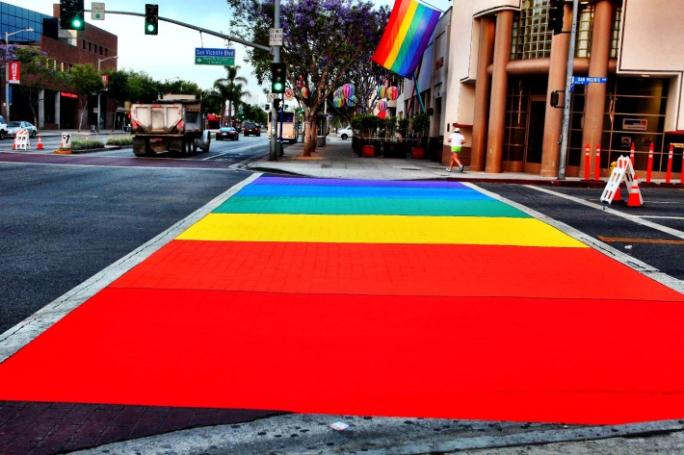
If there was ever a doubt that West Hollywood is a center of gay life, consider the results of the Center for Disease Control’s latest National Health Statistics Report.
While WeHo reports that 41 percent of its 34,000-plus residents are gay men and five percent lesbian, the CDC survey says only 1.6 percent of all U.S. adults aged 18 and over identify as gay or lesbian. An additional 0.7 percent identify as bisexual, and another 1.1 percent identify as “something else.”
That means LGBT people arguably make up no more than 3.4 percent of the population — making all the more impressive the community’s successful push in recent years for LGBT rights. At the same time, the numbers have provided ammunition for the anti-gay American Family Association. Its president, Tim Wildmon, cited the CDC statistics in a press release in which he said “the bullying, pressure and coercion of a lobby motivated by an extremely small population in America has become focused on advancing the homosexual lifestyle as normal and even ideal.”
The CDC survey, based on face-to-face interviews of 34,557 adults, found little difference in the percentage of people identifying as gay or lesbian in the 18-44 age group as compared to the 45-64 age group (1.9 and 1.8 percent respectively.) However only 0.7 percent of those 65 and over identified as gay or lesbian.
By contrast, a larger percentage of people in that younger age group (1.1 percent) identify as bisexual than do their older peers (0.4 percent for the 45-64 year old group).
This was the first time questions about sexual orientation have been included in the National Health Statistics study, which has been conducted since 1957. The study is conducted by the U.S. Census Bureau and has attracted much attention in the gay community for the size of its sample and the professional interview techniques that were used. No other studies have included a large enough sample to permit their results to be applied to the nation as a whole. Perhaps the closest comparison is a 2011 analysis by the Williams Institute at UCLA of four national and two state surveys. It concluded that 1.7 percent of people identify as lesbian or gay and 1.8 percent as bisexual.
Given that it was conducted for the CDC, the 2013 survey raised various health-related questions. It found that gay men and lesbian were more likely than straight people to smoke cigarettes (25.8 vs. 17.6 percent). Smoking was especially prevalent among bisexual people (28.6 percent).
Nearly 40 percent of bisexual people said they had consumed five or more alcoholic drinks in a single day compared to 33 percent of gay and lesbian people and 22.3 percent of straight people.
On the other hand, gay and lesbian people were more likely to engage in regular aerobic activity (56.2 percent) than straight people (49.2 percent). Bisexual people also topped straight people in that engaged 54.8 percent engaged in regular aerobic activity.
The CDC survey found little difference in health status by sexual orientation, with 60.3 percent of those identifying as gay or lesbian saying their health was good or excellent compared to 60.6 percent of straight people and 58.1 percent of bisexual people.
Bisexual people had it worse when it came to two other conditions. 10.8 percent reported having experience serious psychological stress in the past 30 days compared to 4.9 percent of gay and lesbian people and 3.7 percent of straight people. More than a third (35.3 percent) of bisexual people were obese compared with 29.5 percent of gay and lesbian people and 29 percent of straight people. When it comes to obesity, the conditions was more prevalent in women, with 36.7 percent of lesbians reported as obese compared to 23.6 percent of gay men. Forty-one percent of bisexual women were obese compared with 26.3 percent of bisexual men.
Given the concentration of HIV infection in the gay community, it perhaps is no surprise that 66.6 percent of gay and lesbian people (the breakdown is 79.5 percent gay and 51.6 percent lesbian) reported having had an HIV test compared to 36.7 percent of straight people. The figure was 53.9 percent for bisexual people.

Many, as we know are afraid to identify. Not every place is like Weho as we can see on tv and in the news. Also many younger people are considering themselves to have a fluid sexuality, as they many are no longer ostracized by their friends for expirementing.